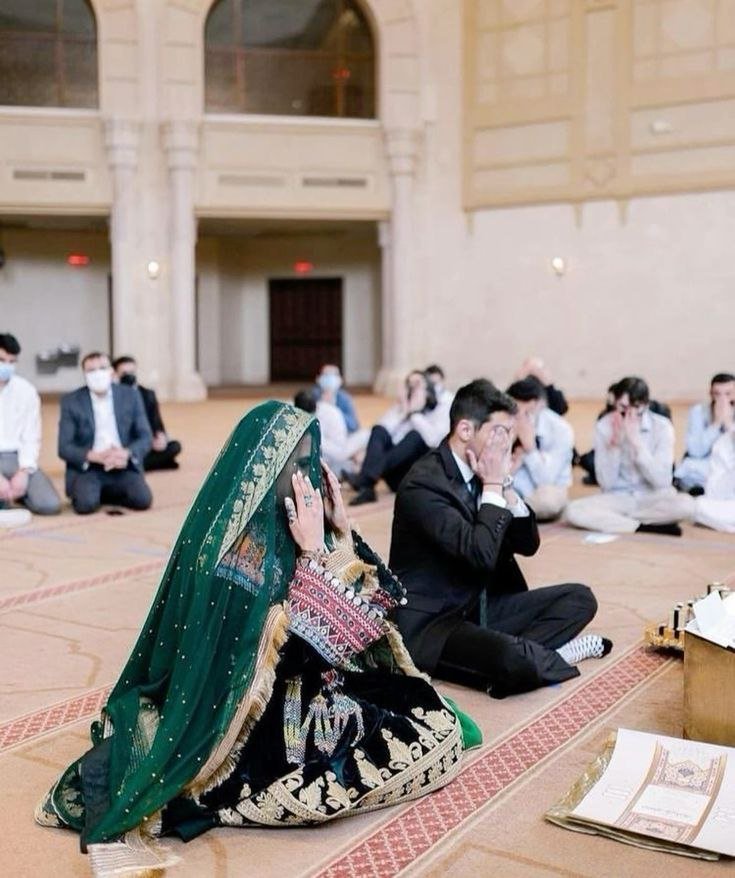Nikah
After the proposal stage and mutual agreement between both families, the Nikah (marriage) process begins. From an Islamic perspective, Nikah is not only a tradition of the Holy Prophet (PBUH), but also a sacred contract that legally and religiously binds a man and a woman to each other. In Herat province, Nikah ceremonies have unique customs influenced by culture, religion, and local traditions.
Preparations for the Nikah Ceremony
On the night of the Nikah, the groom’s family brings a “khancha” (gift basket), which includes clothing, engagement cloth, gold, beauty items, and other gifts based on financial ability. A special dinner is also prepared for both families. These gifts are then taken to the bride’s house by the groom’s family.
In Herat, the bride typically wears green-colored clothes on the Nikah night, symbolizing life, freshness, and growth. The ceremony is usually held in a private setting with only close relatives from both sides, creating a spiritual and peaceful environment.
Religious Execution of the Nikah Contract
During the Nikah ceremony, Islamic witnesses must be present — either two men or one man and two women. The marriage contract involves the following process:
The bride is asked three times:
“Did you ask for this and do you accept it?”
She must reply:
“I asked for it and I accepted it.”
Then she is asked:
“Who is your representative (Wakil)?”
Usually, the bride appoints her father, but if he is not present, it could be her brother, grandfather, or another close male relative.
Similarly, the groom is asked:
“Did you ask for her and accept her?”
He should respond:
“I asked for her and I accepted her.”
This exchange is known as Ijab and Qabool (offer and acceptance) and forms the foundation of the Islamic marriage contract.
Reading of the Nikah Sermon (Khutbah)
After Ijab and Qabool, a religious scholar or mullah reads the Nikah Khutbah, which includes Quranic verses, hadiths about marriage, reminders of spousal rights, and prayers.
The sermon usually begins with:
“Alhamdulillah nahmaduhu wa nasta’eenahu…”
and ends with supplications for blessings in the couple’s new life.
Symbolic Rituals After the Khutbah
Following the sermon, the bride cuts a sprout or greenery, symbolizing a fresh and happy life. The bride and groom exchange rings, kiss the Quran, and look at each other through a mirror, a ritual called “Aina Mosaf” (mirror meeting).
They then share cake and sweets, celebrating the beginning of a sweet life together.



Joy and Celebration
The ceremony continues with traditional songs, dance, and festivities, reflecting love, joy, and unity between the families.
Final Words
In Herat, the Nikah ceremony is a beautiful blend of ancient customs, religious beliefs, and cultural elegance. It not only establishes a lawful bond between two individuals but also begins a new relationship of respect and friendship between two families. Though times are changing, this sacred tradition remains alive, valuable, and deeply respected.